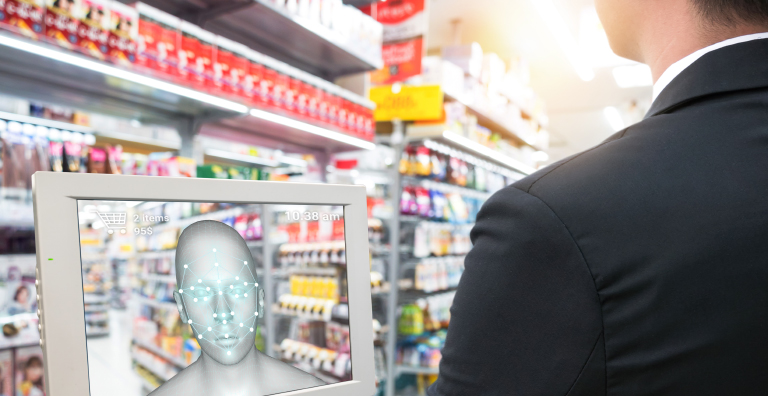Five Things to Consider When Selecting the Right Facial Recognition Technology for Retail
The retail sector is an area of constant innovation, partly because it is so competitive. Leaders are always on the lookout for new technologies that can help them outperform rivals, and this has resulted in sweeping digital transformation over the past several years.
Facial recognition technology is gaining traction in retail due to its speed, accuracy and ease-of-use. The recent changing conditions of the pandemic have prompted even further adaptation, with more retailers looking for ways to automate and improve the customer experience while reducing friction and optimizing operational efficiency. Moreover, in the age of the pandemic, contactless facial recognition offers a more hygienic shopping experience, eliminating the need for face-to-face interaction with a store employee and limiting the need to touch shared surfaces.
However, not all facial recognition technologies are created equal. Here are five key factors to consider when selecting the right facial recognition technology in the retail setting:
1. Matching Accuracy
It seems almost too obvious that matching accuracy is one of the most important criteria for selecting a facial recognition solution. The right solution will both be highly accurate, and also not show disparities in matching customers across different ages, genders and skin colors.
What to look for: Make sure your potential provider trains its facial algorithms that use AI with a large, ethically-sourced dataset — and constantly applies machine learning to keep it accurate and relevant. Look for matching algorithms that have been developed and trained using an extensive dataset that includes a wide variety of gender, age and racial characteristics to minimize demographic matching bias. Seek out information from organizations like the US Department of Commerce’s National Institute of Standards and Technology (NIST), which has done extensive testing on facial recognition solutions and providers.
2. Anti-Spoofing
While facial recognition technology has advanced by leaps and bounds in recent years, bad actors have continued to refine spoofing techniques aimed at tricking a biometric system into a false positive. The best biometric solution will offer peace of mind about unattended self-checkout kiosks through the use of Presentation Attack Detection (PAD) algorithms that are designed to determine liveness and detect fraudulent biometric credentials, such as 3D masks, printed pictures or digital images.
What to look for: Look for a facial recognition solution with advanced PAD and liveness detection that utilizes a combination of hardware and software technologies to determine whether or not a presented biometric is genuine.
Read our white paper to learn more about Presentation Attack Detection.
3. Camera Hardware
Digital cameras serve a critical role in facial recognition applications, performing key features like face detection and capture, image quality assessment, face template extraction and matching. In retail stores, lighting can also create difficult matching conditions.
What to look for: Look for durable camera hardware that can work in extreme weather and lighting conditions. The camera should continue to deliver high performance in direct sunlight, total darkness, strong backlight or dim light — no matter when or where you conduct business.
4. Data Privacy
Privacy is a serious concern, and new regulations like GDPR and CCPA are emerging to protect consumers. That’s why it’s important to use technology that has privacy protection — and regulatory compliance — built into its foundation.
What to look for: Look for solutions that allow users to have the ability to opt in and out. For example, by asking interested customers to enroll via a selfie photo and a picture of a valid government-issued ID, it guarantees explicit consent on the part of the user. In addition, a best-in-class solution will use encryption and secure endpoint data transmission to protect customer data, while storing the customer’s face as a biometric template that cannot be decoded or reverse-engineered, rendering it useless to hackers in the unlikely event of a data breach.
5. Cost Efficiency
Diving into the world of facial recognition sounds expensive, but it can be done cost-effectively. The costs of a facial recognition project are challenging to estimate. There are many variables which contribute to the project cost, including types of software and hardware, connectivity requirements, database sizes, the complexity of the project scope and requirements, ongoing system maintenance and support, and user training.
What to look for: Look for a reliable provider that not only has the expertise in facial recognition technology but knows the retail business. It also makes financial and efficient sense to select a provider that can provide a modular solution approach, rather than one with strict requirements of a complete and total overhaul.
Start the project strategically in one business area, make sure it’s successful, then expand to another business area or add more features as needed. For retailers, loyalty programs provide an excellent entry point. It would be faster and easier to have customers enroll their faces into existing loyalty systems. By adding facial recognition to the loyalty programs, stores can validate members’ identification and ensure compliance for any age-restricted purchases, as well as enable face payment for fast, seamless and touchless checkout.
These are five important considerations. While the most forward-thinking retailers will be early adopters of facial biometric solutions, those who are most thoughtful in selecting the best possible options will outcompete rivals over the long run.
To learn more about these and other important factors to consider in deploying facial recognition solutions, read our latest eBook, The Ultimate Retail Experience Starts With Facial Recognition.
Learn more about the world’s most accurate facial recognition technology.
